Examining a ‘vexing, tragic and unsolved mystery’
The Douglas C-54 “Skymaster” was a big airplane.
By Freelancer on January 14, 2022
The Douglas C-54 “Skymaster” was a big airplane.
The four-engine cousin of the CP Air DC-3 “wind vane” that is memorialized outside the Yukon Transportation Museum, a C-54 had a wider wingspan, a taller tail, a crew of seven and room for 37 passengers.
When USAF Skymaster #2469 left Anchorage on Jan. 26, 1950 – following the Northwest Staging Route over the Yukon and then south, toward Great Falls, Montana – it was carrying a full load.
Almost every passenger was a military man, except for a young family – Joyce Espe was seven months pregnant and travelling with her toddler, Victor. Espe was going to see an obstetrician in Colorado.
The Northwest Staging Route was an electronic highway through the sky, mirrored on the ground by communications outposts set up every 100 miles.
The Skymaster’s flight crew dutifully did their radio check-ins – the first communications base inside the Yukon border was at Snag.
The aircrew reported some minor icing on the wings but gave no indication of distress. Their next check-in was supposed to be at Aishihik.
But that never happened – they disappeared. A massive three-week search turned up nothing, and to this day the airplane and all its passengers and crew are still missing, presumably somewhere in the Yukon.
I first heard about the Skymaster when I was back in Whitehorse for the 2018 Available Light Film Festival with another Yukon documentary, Secrets From The Ice.
Sometimes one great story leads to another. I was visiting Yukon Archeology when I spotted some battered old aircraft parts on a shelf.
Archeologist Christian Thomas said, “We found those last summer – we thought they might’ve been from the Skymaster, but they weren’t.”
Skymaster? What Skymaster?
The story snowballed from there and turned into our new film, Skymaster Down, screening at this year’s edition of the Available Light Film Festival on Feb. 4.
“It’s an American aircraft full of American people,” says Bob Cameron, the well-known Yukon aviation historian and pilot. “And I just wonder how could something that big not be found yet?”
Cameron was five years old when the Skymaster went missing.
He remembers his father coming in for supper, talking about how difficult the winter conditions were, and how search planes were crashing. (Incidentally, two of those search planes are still out there – a C-47 on the flank of Mt. Lorne and another left derelict high in the Ruby Range.)
The Yukon government has a database of more than 500 known aircraft wrecks in the territory – many of them went down between 1942 and the early ’50s, during the rush to fortify Alaska against the Japanese during the Second World War, and then later, to bolster the northern front lines during the Cold War.
Of all those wrecks in the data base, only four are still unaccounted for. And one of those is the Skymaster.
“In the years since 1950,” says Cameron, “I have to that think every square foot of the country has been crisscrossed by aerial surveys, game surveys, geologists, prospectors, hikers, um, and not to mention crisscross by airplanes on charters and skid routes and so on. Why nothing has been spotted, I don’t know.”
Even more surprising for me was that the Skymaster tragedy has been largely forgotten.
Before 2018, I had never heard of it. I soon found out that it was the same for most everybody else – except the relatives of the people who were on that plane and a small but dedicated crew in the Yukon who have been trying to find the Skymaster and give closure to the families.
“It has become personal,” says Donna Clayson, a longtime volunteer with the Civil Aviation Search and Rescue Association in Whitehorse.
CASARA has been using its summer training sessions to search for the plane and all those missing people.
“I almost feel like I knew them,” Clayson says. “What if that was my parents? What if that was somebody I knew? And these people are still out there after 70 years.
“These are families that are missing their loved ones. And if we can find one small clue, that’s all we need. It’ll lead us to the big picture.”
But the big picture is elusive. I dove into the story, searching for accident reports, newspaper stories, first-person accounts – anything that could help paint a picture of what might’ve happened on that day in January 1950.
“I would rather know that he died instantly than if they did have some survivors and they froze to death. I don’t think I could stand that,” says Judy
Jackson, who lives in Alabama.
Her father, Clarence Gibson, was the radio operator on the Skymaster. Her mother was still pregnant with Jackson when Gibson went missing.
“I just hope it was instant. I just don’t understand why there’s not been anymore searches done for that airplane. It’s just a mystery.”
“I was 22 when I was there, in Snag,” says Clare Fowler, who is now in his 90s and lives in Ottawa. “I’m probably the only guy alive now that was there at the time.”
Fowler was a civilian radio operator at Snag. He recalls a flurry of U.S. and Canadian military aircraft landing at their remote airstrip while searching for the lost Skymaster.
“The husband of the wife (Joyce Espe) on board (the Skymaster) that was pregnant, her husband came up and thought he could help out and search, to be another pair of eyes on one of the search planes. But there were so many search planes.”
Sgt.-Maj. Robert Espe was desperate and despondent that his entire family went down with the Skymaster. Before departure on Jan. 26, he made sure Joyce and Victor were sitting next to Sgt. Roy Jones, Espe’s best friend.
In a newspaper interview, Espe said, “My last words to Joyce were ‘if you have to jump, give the baby to Sgt. Roy Jones’ … she said she would.
“When I heard the plane was missing, I got emergency leave. I arrived in Whitehorse Saturday.
“On Sunday morning, I boarded the first search plane to leave the base. We were out for about nine hours.
“I’ve gone through the hysterics and cried myself silly,” he said.
“That was part of our, our life growing up, knowing about Joyce going missing,” says Joyce Espe’s niece, Jeannie Stanley.
“And we, we just hope that they, one day they will find her, they will find the plane. So we can all have closure.”
“You think that the government would have done more,” says Stanley’s brother, Royce Stanley, “because they have service people on board. But to
just give up? It’s not really the American thing, is it?”
Before the construction of the Alaska Highway started in 1942, Whitehorse was a small transportation hub, with sternwheelers lined up along the Yukon River waterfront and trains pulling in from Skagway.
Then thousands of soldiers arrived in a scramble to complete the highway – and Whitehorse was transformed into a sprawling military camp. By the time the war was over, and control of the highway was transferred to Canada, the territory was forever changed.
The signs of that old military “friendly occupation” are scant around Whitehorse these days.
There are still a few Quonset huts, some old construction machinery at the museums and of course the airport, which was vastly expanded during the war.
If the Skymaster had not gone missing, its passage over the city would have been unremarkable, recorded as regular air traffic.
Instead, it remains one of Canada’s most vexing, tragic yet forgotten unsolved mysteries.
And I’m hoping Skymaster Down will help bring attention back to the story, so that mystery can finally be solved.
In late 2020, months after we had completed our filming, some photos showed up on an American aircraft wreck hunter’s website.
Somehow, he had gotten around the Yukon’s COVID checkpoints and snuck into the territory.
He said he spent three days hiking up Mt. Hoge, inside Kluane National Park, and claimed that he had found the Skymaster.
His photos showed tattered aluminum bits that clearly came from an aircraft. No one has been able to get up there to confirm the story and the wreck hunter is reportedly “uncooperative.”
Even so, this might be the most important development in the Skymaster story since that tragic day in 1950.
Skymaster Down Part II?
We’ll have to see.
Skymaster Down will premiere at 9 p.m. ET/PT this Sunday on Documentary Channel.
It was written and directed by Andrew Gregg, who co-produced it with Deborah Parks. It is made by Skymaster Productions in association with
Documentary Channel.
©ANDREW GREGG, 2022
By ANDREW GREGG
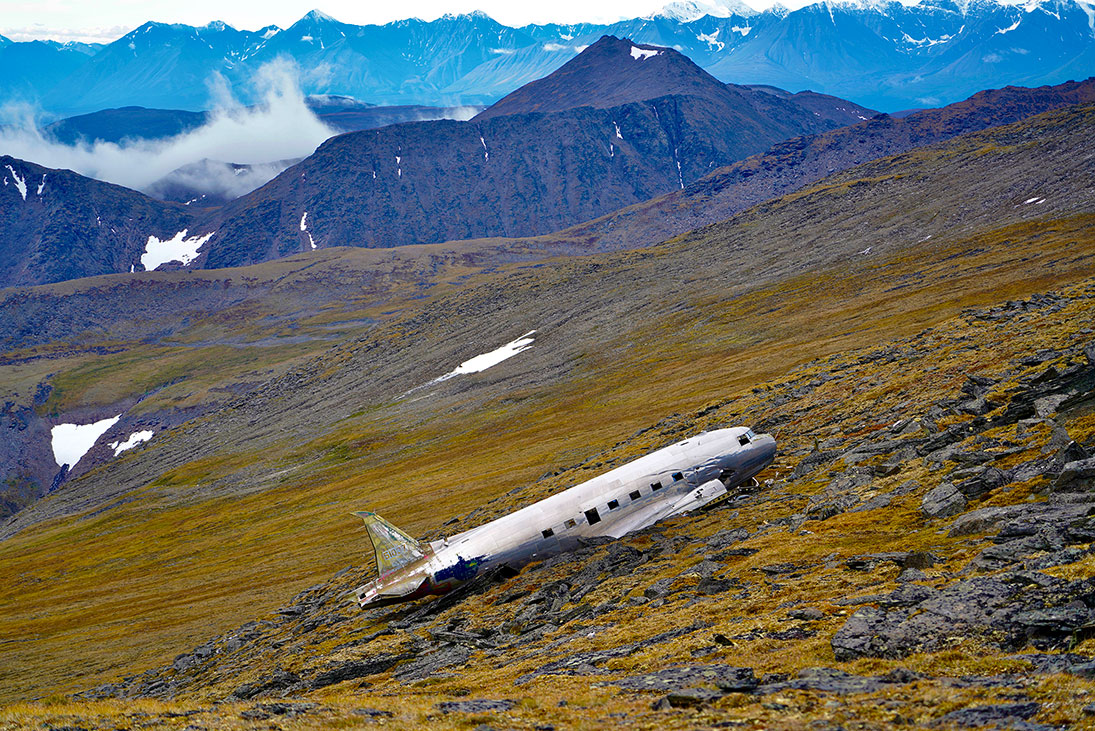
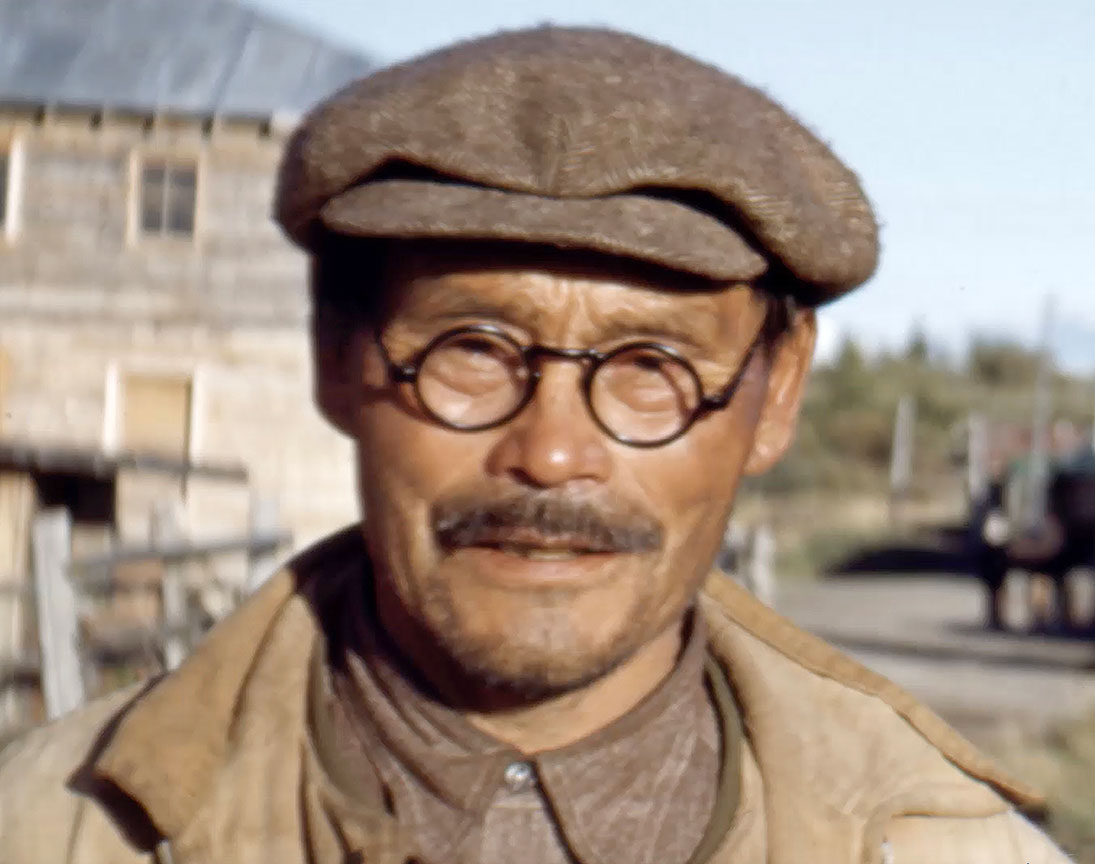
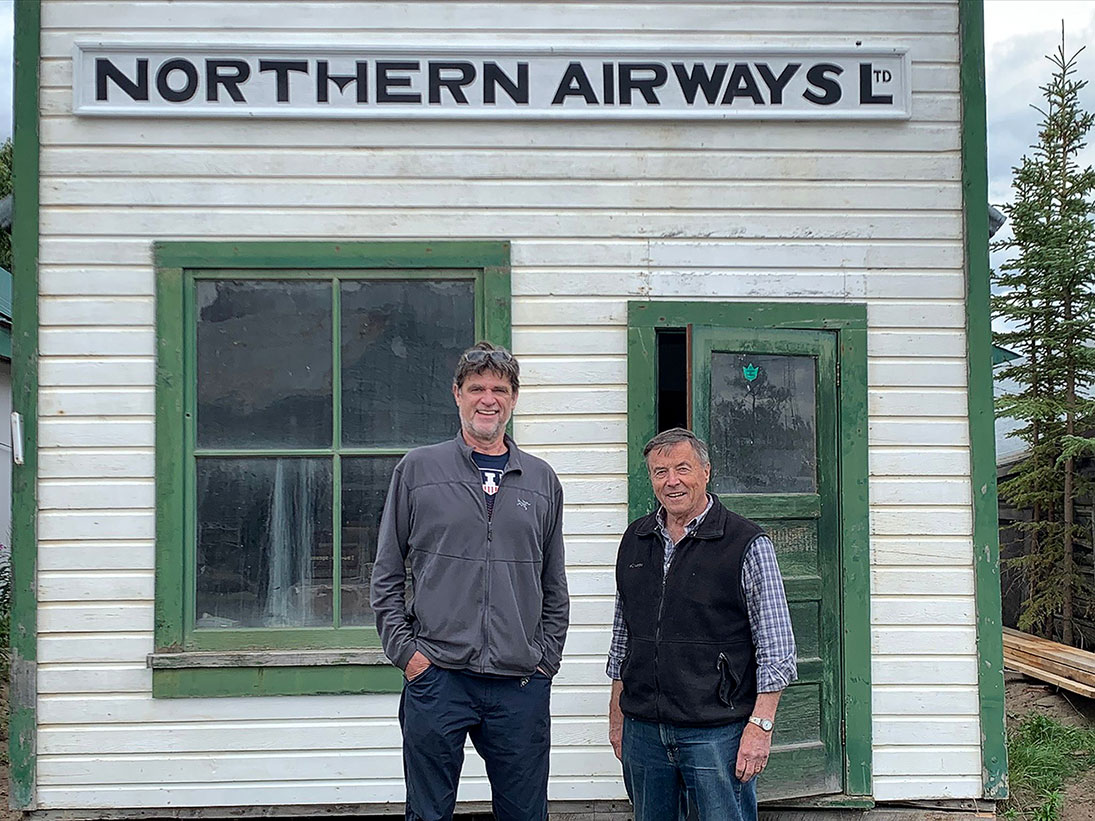
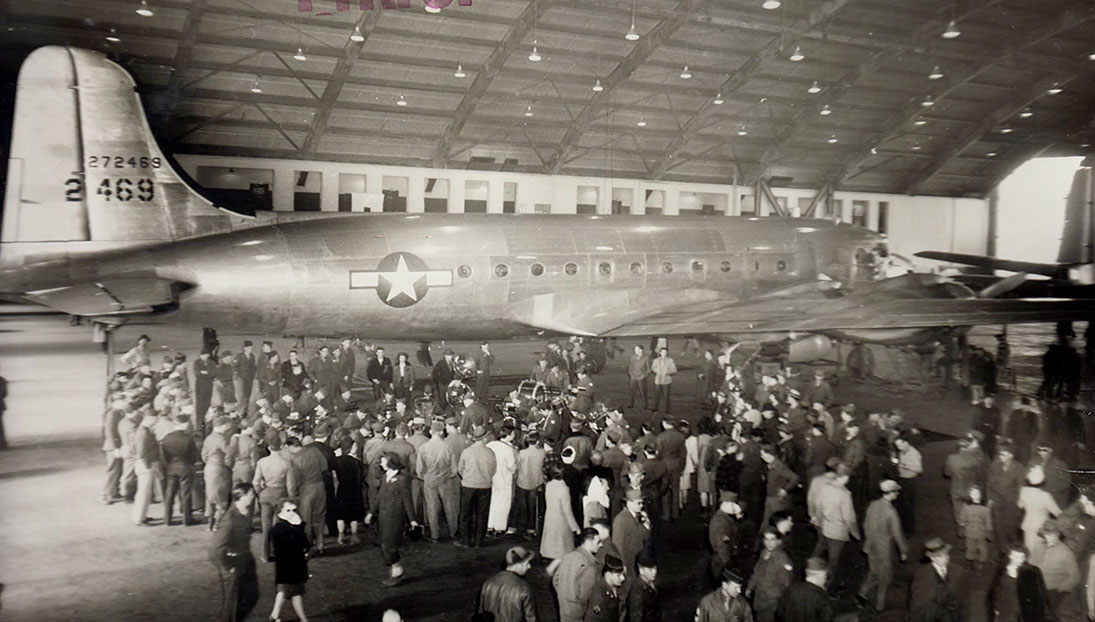
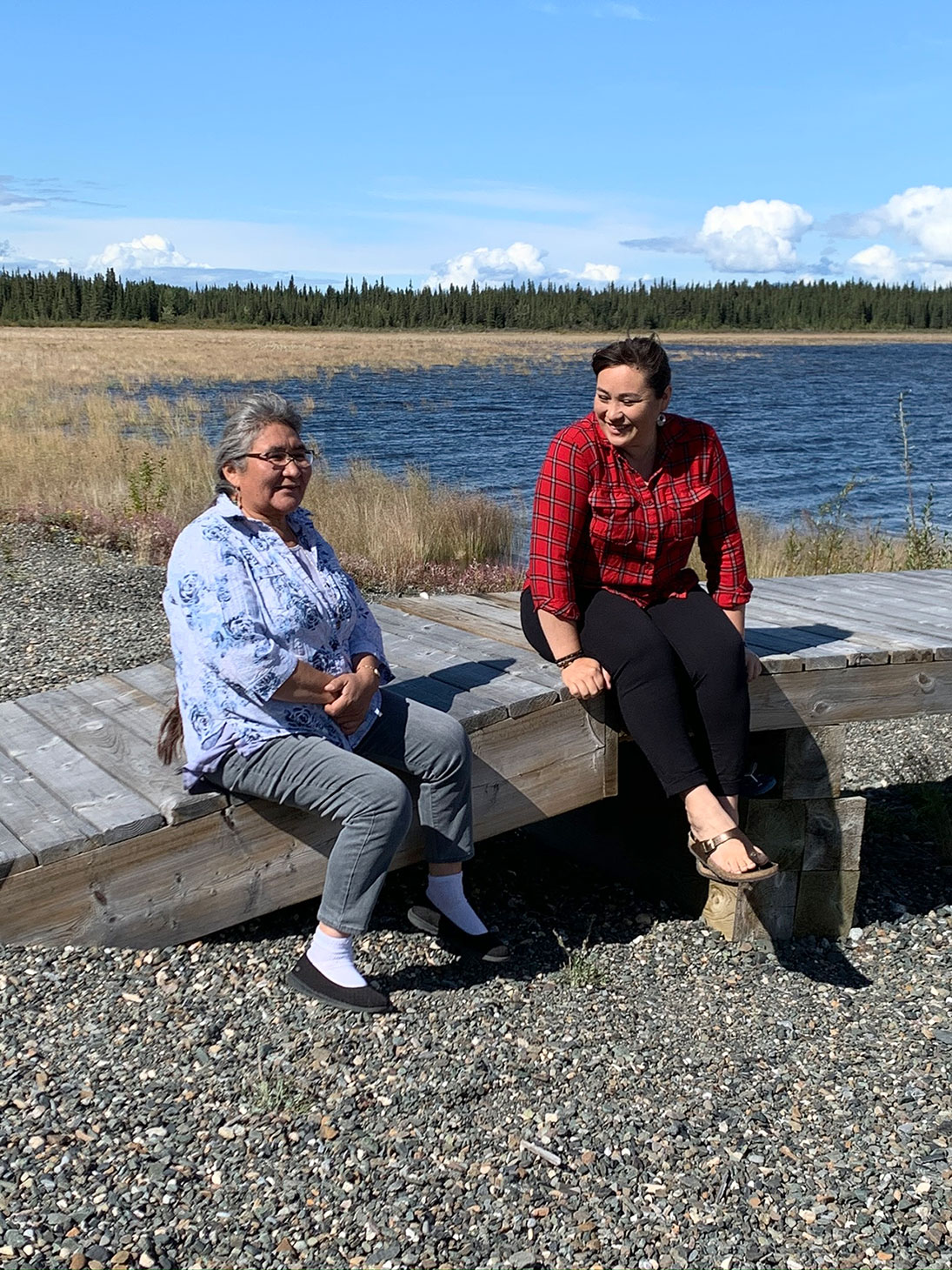
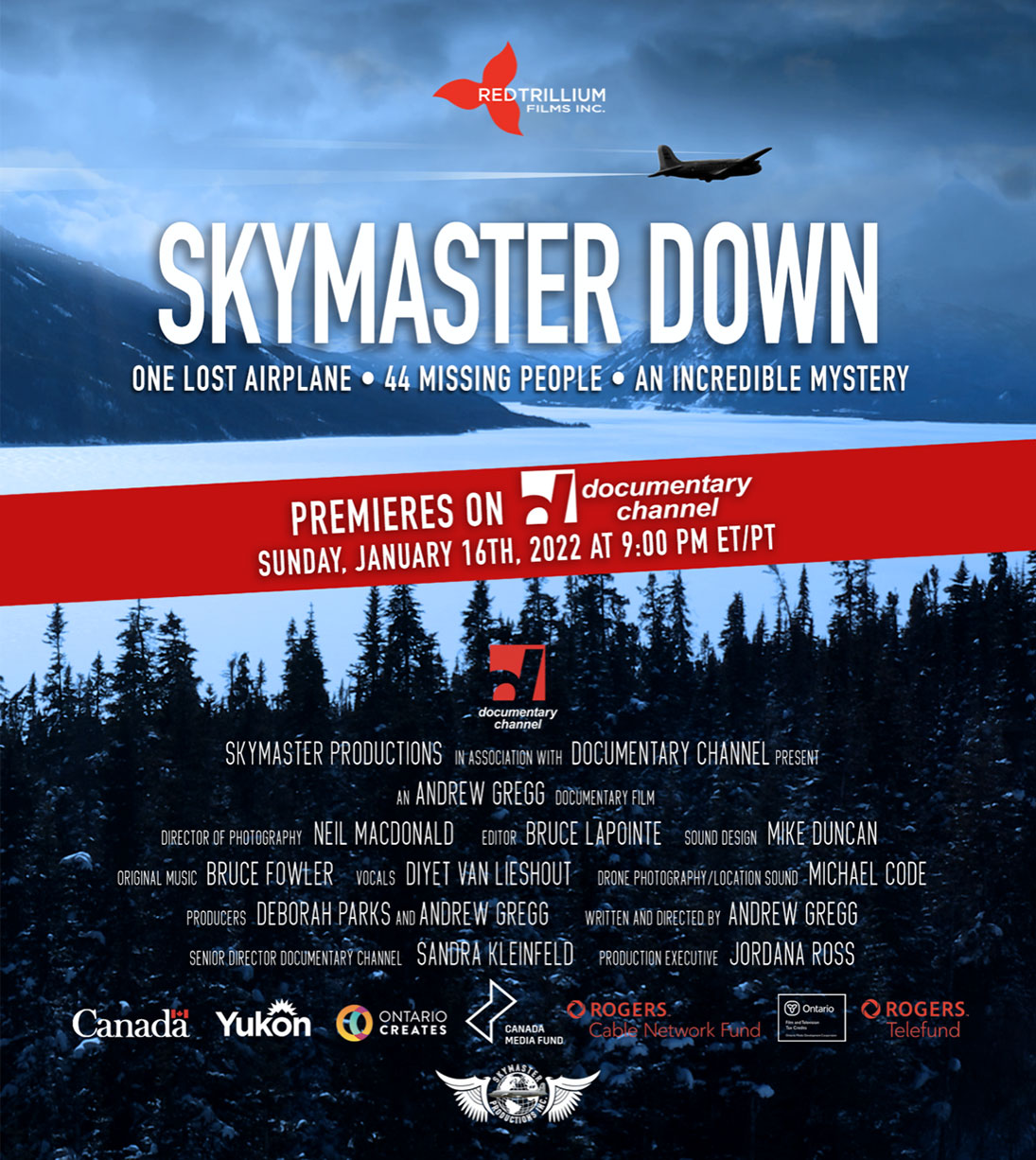
Comments (12)
Up 1 Down 1
Curt West on Aug 13, 2022 at 8:54 am
I just saw this documentary in rerun and I found it excellent, but I have one criticism. I feel the audience was left with the impression that the U.S. government just shrugged and decided not to bother going back in the spring to try to recover the bodies, which was not quite fair. The truth was, by the time the thaw was over in June, the Korean War had broken out. Few people today, or even then, realize how woefully unprepared the U.S. (and the West in general) was at that point to fight a conventional war in the East, having focused their spending on the Atomic Age and facing down the Russians in Europe. The U.S. was equipped with well-worn WW2-era weapons and had limited resources, especially air transport to get forces over to Korea. They simply could not spare aircraft to mount a major search to recover bodies. They had to prioritize, and the hard, sad truth was that the war and saving the lives of the people fighting it, had to take priority over the dead. Three years later, it had faded into history and people's memories were more on the tens of thousands of bodies that came back from Korea, rather than the 44 in the Yukon. I've often wondered if the military could somehow utilize searching for the Skymaster as some sort of training exercises for aircrews, search and rescue, new surveillance tech, etc, to justify the expense. They've certainly done that for shipwrecks.
Up 2 Down 0
Carey Jones Robinson on Jan 24, 2022 at 12:52 pm
I am the granddaughter of Sgt. Roy F Jones and the daughter of his only child, my father. My family appreciates all the searches and investigations that have been done through the decades. My grandmother passed away never knowing what happened to her husband and the loss of this soldier has been felt for generations in his family. She was buried in the national cemetery and we had to pull some strings to have her grave marker reflect both him and her because he is still considered MIA. Thank you to the tireless efforts of everyone that have kept the investigations of this tragedy going. It will always be a part of our family's legacy.
Up 1 Down 3
A&D Avoledo on Jan 20, 2022 at 6:07 pm
This plane went missing in January. Not much chance it went into a lake. Not much open water in The Yukon in January.
Up 3 Down 0
Where to view on Jan 18, 2022 at 3:55 pm
Channel 344 on Cable - Documentary channel. And I believe it's going to be available next month through Available Light Film Festival https://yukonfilmsociety.com/alff
Up 12 Down 2
Groucho d'North on Jan 17, 2022 at 8:00 am
I watched the program last evening and was impressed by it, a well researched documentary, well produced and it told a great story about the various aircraft still on the Yukon's mountainsides.
Nice job Mr. Gregg!
Up 14 Down 1
John on Jan 16, 2022 at 7:50 am
Could be that they never found anything on land because maybe it's at the bottom of a lake.
Up 22 Down 2
Josey Wales on Jan 15, 2022 at 4:31 pm
Hey Matthew...yup newsworthy indeed. Given the era...
Very good chance one or more of the souls on board was a member of an elite group of brave men...the greatest generation.
Given all that generation selflessly gave, we owe to the family to find that a/c....but that is just my opinion.
Clearly you have a different one eh?
You do know who fought hard and strong FOR freedoms and ousting tyrants? Yup...same crews...the greatest generation.
Carry on Matthew, with what you deem real, of interest to your version of sacrifice.
Up 11 Down 1
Nathan Living on Jan 15, 2022 at 2:26 pm
It may be near Mt Hoge or in some many, many other locations based on personal accounts.
Hope it's found soon.
Up 4 Down 73
Matthew on Jan 15, 2022 at 5:54 am
So, democracy is under attack, were being forced to do many things against our wills and this is a news worthy story!?
Up 5 Down 2
Moose101 on Jan 15, 2022 at 5:47 am
What is that channel # on cable ?
Up 17 Down 0
James Russell on Jan 14, 2022 at 6:55 pm
I was 8 years old and lived at Haines Junction, Mile 1016, my Father was the Foreman for highway maintenance. I thought they found that downed aircraft a few years ago on a glacier not far from where it took off.
My Mother always told the story of seeing a cloud of smoke or steam rise above the mountains south of the Alsek River, but her story was discounted.
Up 22 Down 2
Josey Wales on Jan 14, 2022 at 5:18 pm
Yes quite the story indeed!
Someone from the family should reach out to “Adventures With Purpose “
If in their sleuthing, that a/c may be determined to be in a body of water
that crew could find many answers for the family.
Bob is correct, bizarre that it’s still missing despite the traffic since.
I hope I am still around the hear of the discovery of it and the crew, passengers.